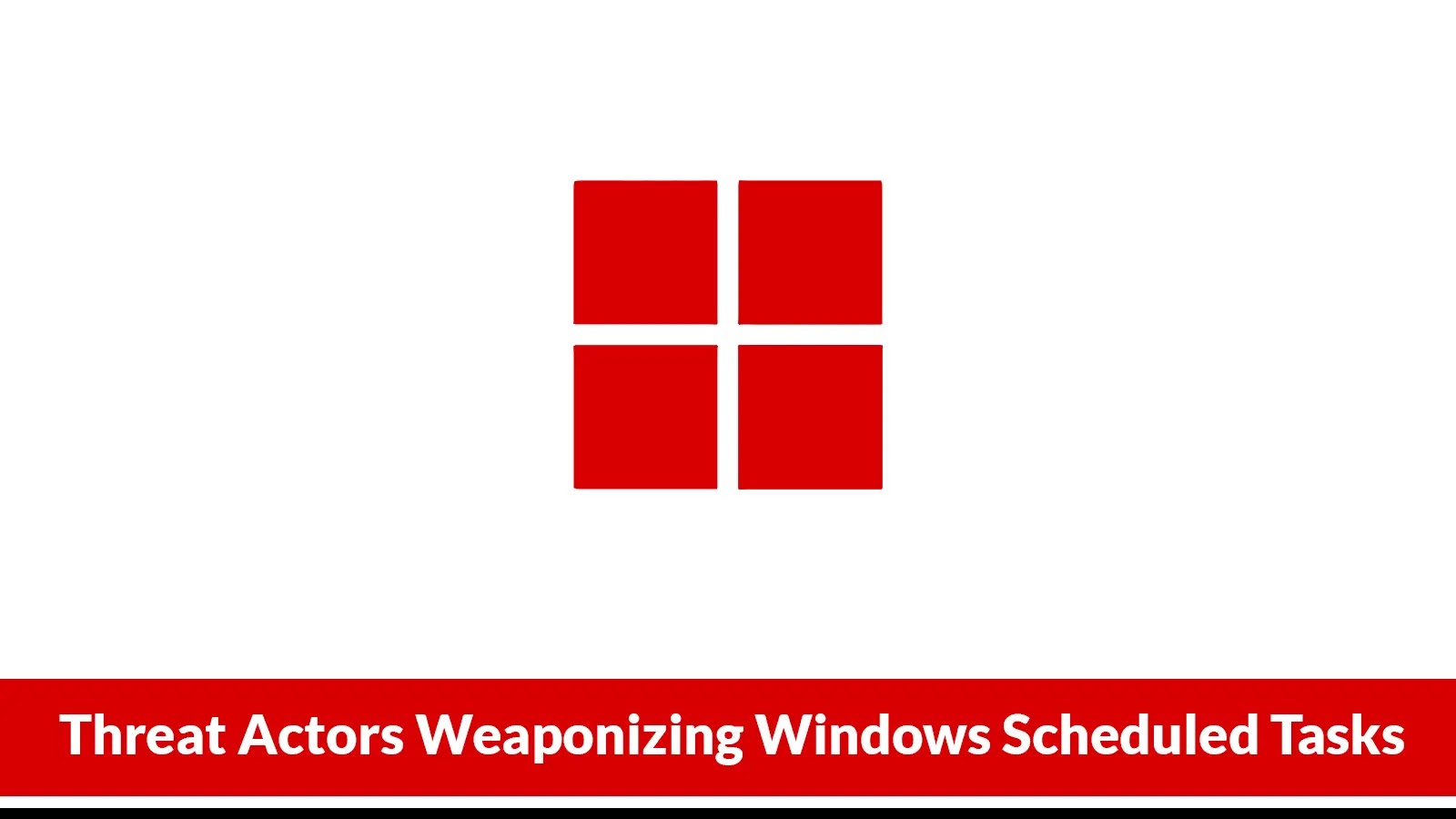
Threat Actors Weaponizing Windows Scheduled Tasks to Establish Persistence Without Requiring Extra Tools
Threat Actors Weaponizing Windows Scheduled Tasks for Stealthy Persistence
In the evolving landscape of cyber threats, adversaries are constantly refining their methodologies to achieve their objectives with increased stealth and efficiency. A concerning trend observed over the past year highlights a shift towards simpler, yet highly effective, tactics: the weaponization of native Windows Scheduled Tasks. This sophisticated, yet elegantly simple, approach allows threat actors to establish and maintain a persistent presence within compromised environments without the need for deploying additional and potentially detectable tools or complex exploits. This post delves into how malicious actors are leveraging this built-in functionality and outlines essential defense strategies.
The Simplicity of Native Persistence
Traditional methods of achieving persistence, such as intricate rootkits, advanced malware, or zero-day exploits, often carry higher risks of detection due to their complexity or the unique forensic artifacts they leave behind. However, threat actors are increasingly opting for methods that blend seamlessly into legitimate system operations. Windows Scheduled Tasks, a core component of the operating system designed to automate routine processes, provides an ideal camouflage.
By integrating malicious commands directly into the Task Scheduler, an attacker can ensure their nefarious activities execute at predefined intervals, upon system startup, or in response to specific events. This technique offers several advantages from an adversary’s perspective:
- Reduced Footprint: Absence of custom binaries or external tools minimizes the digital footprint, making detection challenging.
- System Integration: Leveraging native OS features helps evade detection by security solutions primarily looking for anomalous executables or network beaconing.
- Resilience: Scheduled tasks can be configured to restart even after system reboots, ensuring continued access.
- Low Skill Floor: While effective, the technique itself doesn’t require highly specialized knowledge, making it accessible to a broader range of threat actors.
How Threat Actors Exploit Scheduled Tasks
The exploitation of Windows Scheduled Tasks typically involves several steps, though the specific execution varies based on the attacker’s objectives and the target environment’s defenses:
- Initial Compromise: Before persistence can be established, the attacker must gain initial access to the system. This often occurs through phishing, exploitation of vulnerable services, or credential theft.
- Privilege Escalation: To create or modify scheduled tasks, especially system-level ones, elevated privileges are often required. Attackers will typically perform privilege escalation to gain administrative rights.
- Task Creation/Modification: Using legitimate Windows utilities like
schtasks.exeor PowerShell cmdlets (e.g.,Register-ScheduledTask), attackers create new tasks or modify existing benign ones. These tasks can be configured to:- Execute malicious scripts (PowerShell, VBScript) or commands at regular intervals.
- Launch payloads stored in unconventional locations (e.g., within legitimate directories).
- Trigger connections to command-and-control (C2) servers for further instructions or data exfiltration.
- Re-establish persistence mechanisms if they are removed.
- Obscuration and Evasion: Attackers might attempt to hide their tasks by giving them names that mimic legitimate system processes or by placing them within less scrutinized directories. They might also use obfuscated commands to avoid detection via signature-based security tools.
Remediation Actions and Proactive Defense
Defending against the weaponization of Windows Scheduled Tasks requires a multi-layered approach that combines proactive monitoring with robust access controls and incident response capabilities.
- Least Privilege Principle: Enforce the principle of least privilege for all user accounts and services. Restrict the ability to create or modify scheduled tasks to only those accounts that genuinely require it.
- Regular Task Auditing: Periodically audit scheduled tasks on critical systems. Look for newly created tasks, unusual task names, tasks running from suspicious directories, or tasks executing commands that don’t align with system operations. Tools like PowerShell’s
Get-ScheduledTaskcmdlet can assist with this. - Behavioral Monitoring: Implement Endpoint Detection and Response (EDR) solutions that can monitor for anomalous behavior related to scheduled tasks. This includes detecting unusual process executions initiated by tasks or changes to common task properties.
- Log Analysis: Monitor Windows Security Event Logs, specifically Event ID 4698 (A scheduled task was created), Event ID 4699 (A scheduled task was deleted), and Event ID 4700 (A scheduled task was enabled/disabled). These events can provide crucial insights into unauthorized activity.
- Application Whitelisting: Implement application whitelisting solutions to prevent unauthorized executables from running, even if launched via a scheduled task.
- PowerShell Logging and Script Block Logging: Enable and collect PowerShell logging and script block logging. This provides deep visibility into scripts executed on the system, which is crucial as many malicious scheduled tasks leverage PowerShell.
- User Account Control (UAC): While not a standalone defense, UAC can prompt users for elevated permissions when changes are attempted, providing an additional layer of security.
Relevant Tools for Detection and Mitigation
| Tool Name | Purpose | Link |
|---|---|---|
| Sysmon | Advanced logging of system activity, including process creation, file access, and network connections. Can be configured to detect suspicious task activity. | Download Sysmon |
| PowerShell Get-ScheduledTask | Native Windows cmdlet for listing, querying, and managing scheduled tasks. Essential for auditing. | PowerShell Documentation |
| Schtasks.exe | Command-line utility for managing scheduled tasks. Useful for manual inspection and remediation. | Microsoft Documentation |
| BloodHound | Analyzes Active Directory relationships to identify potential privilege escalation paths that could lead to task modification. | BloodHound GitHub |
Conclusion
The increasing prevalence of threat actors weaponizing Windows Scheduled Tasks underscores a critical shift in adversary tactics: a preference for living off the land (LotL) and leveraging native system functionalities. This approach reduces their footprint, enhances their stealth, and complicates detection for traditional security tools. For cybersecurity professionals, understanding these techniques is paramount. By implementing rigorous auditing, robust behavioral monitoring, and adherence to the principle of least privilege, organizations can significantly bolster their defenses against these stealthy and persistent threats.





